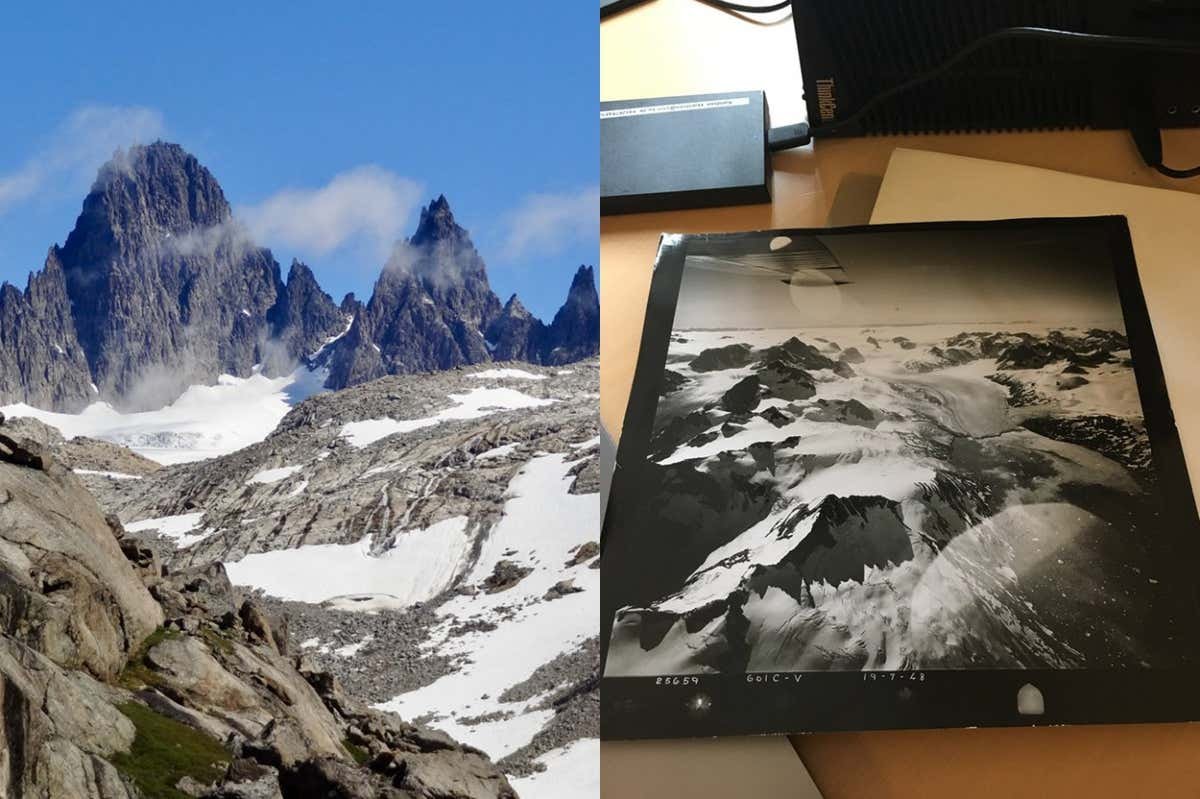
Comparison between recent photos of Greenland’s coastline and 20th-century images reveals how glacier retreat has accelerated
Laura Larocca
Aerial photographs dating back to the second world war have shown that glaciers in Greenland are retreating twice as fast this century as they were in the 20th century.
Greenland is home to 20,000 peripheral glaciers located in mountain valleys and plateaus separate from its massive ice sheet, many of which are melting even faster than the sheet itself. Glaciers worldwide are now contributing about one-fifth of sea level rise, although the Greenland and Antarctic ice sheets will eventually surpass them.
Laura Larocca at the University Corporation for Atmospheric Research in Colorado and her colleagues located the front edge of 821 glaciers in aerial photographs taken between 1943 and 1987. The oldest were taken by US Navy planes mapping Greenland during the second world war, when both the US and the Nazis were trying to set up bases there.
When possible, the researchers also identified the moraine, a small ridge of rocks and sediment indicating the maximum extent of the glacier during a cool period known as the Little Ice Age, which ran from around the 14th century to the 19th century. By comparing this to satellite imagery of the ice fronts, they found that the glaciers receded 7.7 metres a year on average between 1890 and 1999, compared with 14.8 metres a year in the past two decades. That means rising temperatures are outweighing the increased snowfall expected in some areas.

North Greenland glacier in 1978 (left) and 2022 (right)
Max Twining-Ward/University of Copenhagen 2023
“The accelerated retreat of these glaciers is ubiquitous. It’s happening all over Greenland, even though Greenland’s climate zones are diverse,” says Larocca.
Glaciers react more quickly to climate warming than ice sheets. While they also retreated after the end of the Little Ice Age, they are now doing so at an even higher rate in all parts of Greenland, except the especially cold north-east.
“These are kind of like a little early-warning system for what we’re doing to the ice sheet as well, which is where there’s 20 feet of global sea level rise,” says team member Yarrow Axford at Northwestern University in Illinois.
The study is a major step toward figuring out exactly how much Greenland’s glaciers are contributing to global sea level rise, since scientists haven’t had a good estimate of their ice loss before the satellite era began in 1979, says William Colgan at the Geological Survey of Denmark and Greenland. “But, of course, they’re just looking at area changes in this study, not volume changes, so there’s still one more dimension of thickness to go,” he says.
Topics:

Felecia Phillips Ollie DD (h.c.) is the inspiring leader and founder of The Equality Network LLC (TEN). With a background in coaching, travel, and a career in news, Felecia brings a unique perspective to promoting diversity and inclusion. Holding a Bachelor’s Degree in English/Communications, she is passionate about creating a more inclusive future. From graduating from Mississippi Valley State University to leading initiatives like the Washington State Department of Ecology’s Equal Employment Opportunity Program, Felecia is dedicated to making a positive impact. Join her journey on our blog as she shares insights and leads the charge for equity through The Equality Network.




